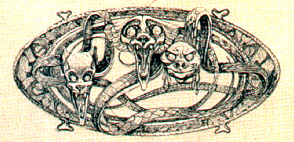

Compare and Contrast McKibben's with Malthus' arguments.
Environment, or surroundings are influenced in contingent and indirect ways by society. But we need to explain how the influences are manifest in logically and in some detail.
This method of thinking by comparison and contrast is the initial step to – analogical analysis – breaking things down into comparable concepts that make up a bigger whole is after all what serious thinking is all about: the critical capacity to distinguish errors from verity.
Loading
Next
Question?
We ask: would having only one child make a crucial difference toward insuring a healthy future for ourselves and our planet?
How is it critical:
But the environment alone may not persuade most people to consider having just one child, as eighty percent of Americans have siblings; the nations average number in a completed family is 1.5 children.
Write: What is an important paragraph in McKibben and what does he argue in that paragraph?
- Where is his evidence?
- How do you know that is crucially important?
Report verbally on your nations and what the data reveal about them.
What to know
Malthus said:
Malthus law of population growth
McKibben argues:
Bill McKibben, Maybe One: A Personal and Environmental Argument for Single Child Families. New York: Simon and Schuster, 1998.
McKibben in his book recognizes that the transition to a stable population size won't be easy or pain-free but ultimately is inevitable.
Start to write (Find an argument in the readings of Malthus' main point and McKibben's main points to compare and contrast.)
How does this relate to CORE?
We are organizing different arguments into a matrix: Compare Contrasts meaning Malthus arable & agricultural lands are limited
McKibben consumption of resources
Hardin Life boat ethics
What we know about arable land and the impact formula; may relate to ghost acres.
What did we do?
We found that by contrasting authors, Malthus came up with a law of differential natural increase in food resources and population.
The McKibben book has an argument that may relate directly or indirectly to the argument by Malthus if we look at arable land, affluence versus poverty, and technological capacity to impact the surrounding area in terms of both density per square miles and ghost acres.
May have determined that natural increase, total fertility rate, and GNI-PPP per capita or "per capita rates of change are more refined and revealing than aggregate data.
Summary
Population is more than numbers of people.
The P in the P= Fertility – Mortality +/- (Emigration - Immigration)
is not precisely the same P in the
I=P*A*T or Impact = Population X Affluence X Technology
Three reasons why:
1. population rate of natural increase {related to doubling time}
2. population density or people per area (hectares or square kilometers, or square miles)
3. population in relation to the number of acres needed to sustain (10-12 cares per capita) a person
as the compound or contingent measures of the number of people.